We live in a small world. So, it’s no wonder that people like to shift base from place to place once in a while.
And what better way to spend your days than soaking up the sun in beach-lined Uruguay! Pleasantly temperate weather, a stable political system, and a high standard of living, Uruguay has it all to offer to those who would consider moving there.
Primarily overshadowed by its more prominent and famous neighbors Argentina and Brazil, Uruguay boasts of a large land area as compared to the population. The country is a veritable haven for the expat in you with ample scope of earning and living a good life. Many compare it to Chile due to it’s lifestyle, strong European influences and heritage.
In the following guide, we’re going to go on a little tour of the best places to live in Uruguay. We’ll discuss multiple aspects of living in these cities, and also explore some of the local attractions.
So, let’s get going!
Table of Contents
Four Best Places To Live In Uruguay
1. Montevideo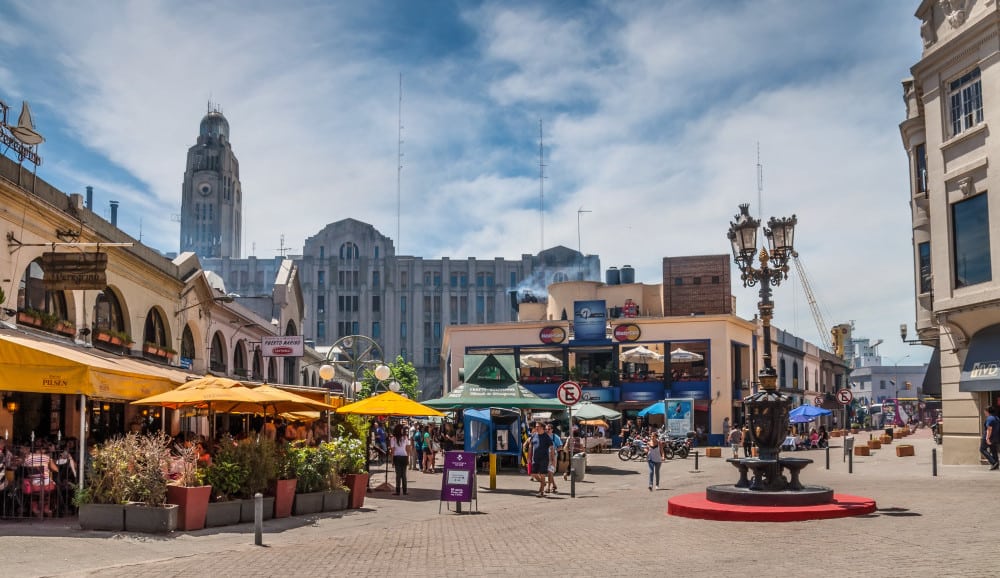
If you get the option of choosing where to live in Uruguay, choose Montevideo. Montevideo, the capital city of the nation, is the largest city in Uruguay and houses almost one-third of the country’s entire population.
Montevideo was established in 1724 by a certain Bruno Mauricio de Zabala, and since then, has seen multiple political and economic upheavals. It’s the 19th largest city in Latin America and has a GDP of almost $50 billion.
A pleasant and safe city, Montevideo has been consistently rated as the best city to live in Latin America. With beautiful parks, sunny beaches and friendly culture, this is one of the cities you wouldn’t want to leave.
Climate
If we have to describe the city’s climate in one word, then we’d go with pleasant. Mildly warm and humid in the summers, with crisp and comfortable winters, Montevideo is below the equator and hence has the seasonal months reversed.
Annually the city sees an average temperature of about 62 degrees Fahrenheit, which makes for sweat-free living conditions. And although the summers are hot to a certain degree, the evening sea-breeze cools things down.
Expect rains in the winter, with sudden chilly winds that sweep through the city and make you shiver ever so lightly. Fall and spring are times when tourists flock to this city, but as a resident, you’ll have access to the balmy breeze all year.
Cost Of Living
Next, let’s discuss the cost of living in this beautiful city. With an affluent upper-middle-class, Uruguay isn’t a low expense country, and as the capital, Montevideo certainly boasts of relatively higher costs of living.
Most people wouldn’t mind it though, for the city has an extremely high quality of life. There are a large number of shops that fulfill your daily needs, and for dining out, you can choose from a wide selection of eateries that offer the irresistible Parrillada.
Rent costs are a bit high, but if you’re a couple with an apartment, you can comfortably live on somewhere around $3,000 a month. Of course, you’d have to spend in Uruguayan Peso, which is the national currency.
Education
When it comes to education, Montevideo has ample options both in the public as well as private domains. There are a large number of public schools that offer quality education for children.
For higher education, the city is the home of The University Of The Republic, which is the most prominent educational institution in all of Uruguay. Founded over 170 years ago, the university boasts fourteen departments and has many eminent Uruguayans as alumni.
Montevideo is where you’ll also find ORT Uruguay, the largest private university in the country. And if you’re thinking about schools, then you can’t do better than The British Schools Of Montevideo, one of the oldest and best schools in Latin America.
Transportation
If you go by sheer land area, Montevideo is a pretty small place, which means you can get around anywhere quickly. Buses in the city are low cost and frequent but can get crowded during office hours.
The city also has a large number of taxis, but these are a relatively expensive mode of transport as compared to buses. You can also hire a car, provided you’re at least 21 years old with a valid driver’s license and a passport.
However, when you’re new to the place, we recommend doing some exploration on foot. But be careful and brush up on your Spanish, as you’ll have to ask for directions. And if you’re a bicycle person, you can also get those on hire for pretty cheap rates.
Local Attractions
Living in Montevideo, you must have a walk along the La Rambla, a 10-mile long walkway that separates the city from the sea. La Rambla is the best avenue (literally) where you can take a break from the hustle and bustle of the city life, and strike up a conversation with the locals.
When looking for a night out, head straight to the Mercado del Puerto, which plays host to a large number of restaurants. Gorge on seafood and meat, and unless you’ve already become fond of it, don’t miss the Parrilla.
Also, make it a point to visit the Palacio Salvo, the emblem of the city, and the National Heritage Monument. For theatre aficionados, there’s the Teatro Solis, and if you’re fond of mystery, don’t miss the Castillo Pittamiglio.
Crime Rate
As Montevideo is the capital city, crime rates are higher than the national average. However, if you’re a regular resident, you’ll learn to avoid the crime pockets and stick to the safer parts of the city.
There remains the risk of pickpockets and snatching, but this is relatively low. Other crimes such as kidnapping and mugging are very low in the city, and there haven’t been any terrorist attacks in the town in recent times.
Overall, it can be said that the crime situation in the city isn’t that serious, though we advise you to exercise caution. Don’t leave valuables unguarded, and always be quick to use your common sense and avoid deserted locations.
Road Safety
Montevideo roads are safe, and public transport is reliable and affordable. However, the streets aren’t that well maintained. You might find potholes and rough roads, and traffic is high during peak hours. While driving, take care to carry your license and insurance papers.
Verdict
Overall, it can be said that Montevideo is as safe a place to live as any other in the world, if not more. It has a vibrant population, a rich community of expats, scenic locales, and an affordable living environment. Plus, it’s the capital, so you’re bound to have more amenities than the other cities.
2. Atlantida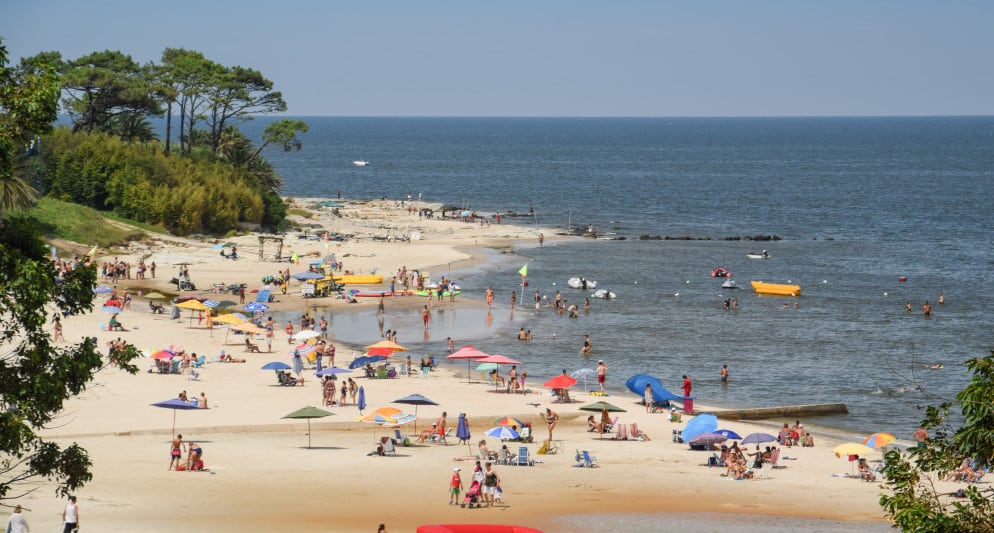
Situated an hour’s drive away to the east of Montevideo, Atlantida is the coastal getaway for wealthy Uruguayans. The place gets its name as it is considered the beach where the Atlantic ocean stops and the Rio Plata officially starts.
Atlantida is lined by picturesque beaches that are mostly frequented by the middle-class population. Bordered by pine trees, the beaches of Playa La Brava and Playa La Mansa are the main attractions here.
Primarily a resort town with close to six thousand permanent residents, Atlantida is a relatively quiet place to live. If you’re fond of the beach life that’s away from the noise of the big city, this is the right place for you.
Climate
As Atlantida lies almost 22m above sea level, it is characterized by mild temperatures and a temperate, warm climate. Summers here are warm and humid, and see a large crowd flocking to the beach to soak up the sun and fun.
The summer season extends from December to March, and average daily temperatures can get above 77 degrees Fahrenheit. Winters, on the other hand, are colder and wetter, and conditions remain slightly windy year-round.
Lasting from May to August, the winters here are characterized by beaches void of tourists. Evenings are usually cold and comfortable, which makes them perfect for going on long walks along the white sandy shores.
Cost Of Living
The cost of living in Atlantida varies with the choices you make as it’s a coastal tourist attraction. If you like the fine dining experience that comes with eating out, then a three-course meal for two will set you back by about $40.
However, if you’d like to try out your culinary skills, there’s ample scope for that. Markets stock everything from eggs to oranges and water to wine bottles, and if you spend about $20, you’ll get all that you need to prepare a decent meal.
Apartment rates are variable and depend on the neighborhood which you choose. Shopping, especially for branded goods, can cost a pretty penny.
Education
Being primarily a beach town, Atlantida isn’t home to many world-class educational institutions. However, there are public as well as private schools in the region, mainly targeted towards primary education.
Transportation
Whether you’re opting for a scenic bus ride, or prefer a more private taxi experience, Atlantida has something to offer for everyone. Public transport cost is pretty cheap, and you can also get a monthly pass that’ll reduce the cost to a greater degree.
But if you genuinely want to explore this scenic resort town, we suggest a walk around the place. It’s only on foot that you can experience the white, sandy beaches, balmy coastal winds, and the local lifestyle.
Local Attractions
Apart from the beaches, Atlantida has several local attractions that are extremely popular with the locals and tourists alike. Those of you who are intrigued by historical legends, make time to visit El Aguila, a legendary stone building built by Michellizzi.
If you’re a wine aficionado (who isn’t!), then the Vinedo de los Vientos is a must-visit for you. This is the first winery in the town and offers beautiful vistas of sprawling vineyards and a cozy welcome that’s slightly off the beaten path. Explore the place with guided tours, and take part in the wine tastings and sales that take place throughout the year.
Considering that you’ll be living in the place, you just can’t help but go past El Aguila, a quirky stone house on the beach. The quirky thing about it is that it’s built in the shape of an eagle’s head. However unusual, this strange model has become one of the must-visit places in Atlantida, maybe on account of it being so starkly out of place.
Crime Rate
When it comes to crime rates, Atlantida is considered a very safe city. During daylight hours, there’s very little to worry about in the way of crime. At night, there are occasional incidents of anti-legal activities, but these are limited to specific neighborhoods only. Overall, a great place to live where you need not be worried about safety.
Road Safety
As it’s primarily a beach resort, roads in Atlantida are safe and smooth. The town doesn’t have much traffic, and you can easily drive around without fear of accidents. Do remember to observe standard safety protocols, however.
Verdict
So, is Atlantida worth the move? We certainly think so! Pine lined beaches, pleasant weather, and moderate cost of living, the town has something to offer for everyone. And while it does leave something to be desired on the educational front, it’s one of the most convenient places to live in Uruguay.
3. Punta del Este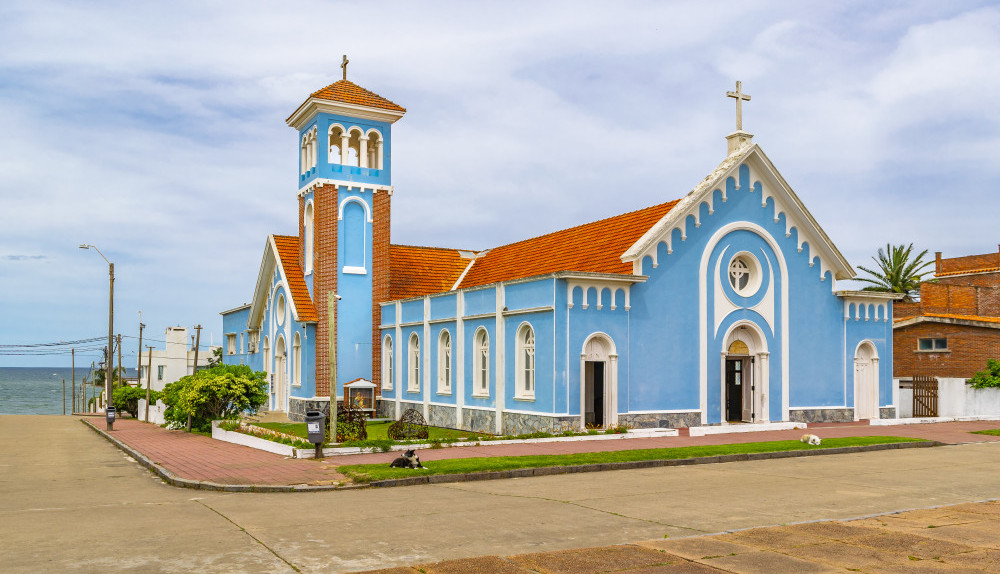
Also known as the Monaco of the South, Punta del Este is yet another resort city located on the Atlantic Coast in Southeastern Uruguay. The city is a relatively less-crowded one with a permanent population of about ten thousand residents.
A glowing city with glorious highrises, Punta del Este juts out to the Atlantic like a jewel on a crown. The city is home to a pair of vast, white-sand beaches open for everyone to visit. Plus, there is a large assortment of restaurants and utility stores that stock everything you might need for a comfy life.
Living options range from the uber-expensive to the extremely affordable, and you can be sure to find something that suits your needs. Overall, this is a place that doesn’t disappoint anyone looking to settle down here for an excellent, unassuming life.
Climate
The climate of the region can be best described as oceanic and is characterized by summers that are pleasant and welcome. That’s why this is the preferred season when people choose to move into the city.
Winters, on the other hand, are on the mild side. One of the reasons why living in this coastal town is a beautiful experience has to be a comfortable temperature, which never really gets too hot. This is on account of the oceanic winds that sweep the region.
Very rarely, the temperatures may drop below freezing point, but this is usually noticed in July, which is the coldest month in the region. Autumn and spring are rainy, and October is typically the wettest month, with December being the driest.
Cost Of Living
Living in Punta del Este is more dependent on how much you want to spend than how much you have to. While there are plenty of opportunities to splurge in the city, it’s also easy to live here on a modest budget, yet experience a good life.
Shopping is best done at Maldonado, which hosts a weekly market where you can find fresh produce and fish at reasonable prices. Transport costs are cheap, and most residents prefer to cover shorter distances on foot and save up some cash.
Punta del Este has a thriving real estate market, and you can find apartments well within your budget. In case you’re looking for cheaper options, you can choose from well-furnished apartments that come on a yearly lease.
Education
Although it’s primarily a tourist destination, Punta del Este has a flourishing educational scene. The city is cosmopolitan heaven, and both public and private educational institutions have something to offer to students.
Institutions such as the Woodside School, St. Joseph Mary College, and St. Clare’s College have witnessed slow but steady growth in the number of students. The city is also home to the Instituto Uruguayo Argentino, one of the oldest private schools in the region.
Also of note is the International College, a scholastic endeavor spread over five hectares. With language, arts, and sports as the core disciplines, this institute is geared towards an economically growing population that’s ready to invest in quality education.
Transportation
When it comes to transportation, Punta del Este is pretty well connected. The airport is situated to the west of the city and receives flights from Brazil and Argentina throughout the year. In peak seasons, the airport even sees flights from as far as Chile.
Buses are available everywhere, and fares are reasonable yet affordable. From the downtown bus terminal, you can hop onto a bus and get to any of your preferred beaches within thirty minutes.
For those preferring a more private approach, you can always opt for taxis and car rentals. Keep in mind that if you’re living on a tight budget, this might not be a suitable option for you as taxi fares and rental rates in the city are on the higher end of the spectrum.
Local Attractions
Punta del Este has something to offer for permanent residents and visitors alike, no matter where you hail from. If you’re living in the city, then you have to visit “The Hand,” an eerie sculpture of five fingers of epic proportions, jutting out of the sand at the start of Brava Beach.
Another interesting place to visit is the Ocean Museum, which is the perfect place for a weekend out with the family. Also, make sure to visit La Barra bridge, constructed to resemble ocean waves.
As for beaches, Punta del Este is lined by a number of beaches such as La Posta del Cangrejo and Montoya, which are two of the finest in the city. Also famous is the Bikini Beach, which promises a brilliant view of the sunset, set against the city skyscrapers.
Crime Rate
Synonymous with a high-quality life, Punta del Este is one of the safest cities in Uruguay. People are laid back and relaxed, and the crime rate is meager compared to the rest of the country.
Road Safety
As mentioned above, unless you have your vehicle, driving around Punta del Este can be expensive if you’re renting a car. Uber is, of course, available, and the roads are pretty decent as compared to the potholed promenades of the capital city.
Verdict
Whether you’re a family looking to settle down or a solopreneur hunting for your new business location, Punta del Este has the potential to be a good bet in Uruguay. The city is safe, has ample amenities, and provides the option to live on a budget. In short, this is a place in Uruguay that you surely don’t want to miss out on.
4. Colonia del Sacramento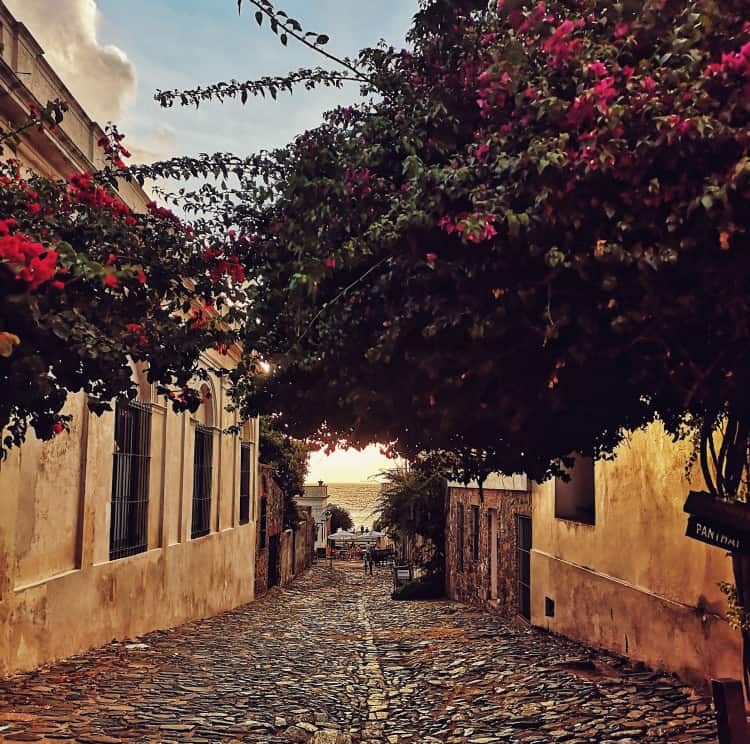
For the final location on our list, we move further inland to Colonia del Sacramento, a UNESCO World Heritage Site. Colonia holds the distinction of being one of the oldest towns in the country, as well as the Colonia Department’s capital.
Rich in legacy and renowned the world over for its historic quarter, the Colonia of today has morphed into a modern trade center that houses a booming textile industry. It also houses a free-trade zone and has many government offices.
The city has a permanent population of about 30,000 people and is developed on a peninsula jutting out into the Rio de la Plata. Wonderfully picturesque, the city is renowned for the stunning views of the sunset that it affords.
Climate
One of the significant advantages of living in this city is the mild subtropical climate that allows you to enjoy the seasons without the discomfort of extremes. Summers in this location are warm and sunny and see a lot of tourists.
Winters, on the other hand, are characteristically cold, with misty mornings that see a lot of frost on the trees. Rainfall is evenly distributed throughout the year, and average temperatures hover around 63 degrees Fahrenheit, 17 degrees Centigrade.
January is typically the hottest month of the year, whereas July boasts of the lowest average temperatures. Overall, if you’re interested in settling down here, and wish to invite friends or family to visit, aim for somewhere around the second week of January as it’s the most pleasant then.
Cost Of Living
Due to its inland location, Colonia sees plenty of activity throughout the year. A preferred destination for North American and European expats, this city combines the charm of the coastal towns with the economic vibrancy of the capital city.
For dining out, the city has many outdoor cafes and restaurants that serve the local cuisine as well as international fares. And if you’re looking for more humble fare, then a bit of searching can get you that too.
Real estate in the city is abundant, with prices ranging from $50,000 to $500,000 and upwards. There are ample markets and shops that allow you to fulfill your daily needs, and for about $2500 a month, you can hope for a comfortable life here.
Education
When it comes to education, Colonia has a sufficient number of public as well as private schools. For higher technical education, the city has a polytechnic center which caters to the ambitious youth of the country.
Transportation
The city is connected to Buenos Aires through three dedicated ferry boat lines, the Seacat Colonia, Colonia Express and Buquebus. The city is also connected to Montevideo via the road network.
The local airport serves to handle smaller airplanes, while there’s the Laguna de los Patos International Airport for commercial flights. It is situated at a distance of 6km from the city, along the road Route 1.
The city itself is served by a network of buses and taxis, though as is our nature, we suggest you take in the city on foot. The roads are well maintained, and you won’t find much trouble moving about if you know the local language.
Local Attractions
While living in a city such as Colonia, there are certain places that you just can’t help but visit. First among them has to be the Convent of San Francisco, which, though reduced to ruins now, houses the newly made Colonia del Sacramento Lighthouse.
Also, among the must-visit places is The Basilica of the Holy Sacrament, which is one of the oldest churches in the country. Leading up to the Basilica is the Calle de Portugal, a cobbled road lined with vintage cars decorated with foliage.
And yes, while returning, be sure to take a walk down the Calle de los Suspiros, or the historic Street of Sighs. The stone walkway is lined with houses that date back to the original colonial times and is a perfect spot for shutterbugs to take some snaps.
Crime Rate
Crime rates in Colonia are lower than the national average. But as an expat settling there, we suggest you maintain the necessary caution. Purse-snatchings and pickpockets are not uncommon, so it’s best not to let your guard down completely.
Road Safety
Colonia is a pretty small city, and most of the local destinations can be covered on foot. But if you’re not in the walking mood, you can always rent a bicycle or a scooter to zoom around the city and countryside.
One of the major attractions in the city is that you also get golf carts for rent, which makes for rather interesting rides. There’s also a ferry service, and a central bus terminus located about a kilometer to the south of the city center.
If you own a car, then you can drive around the entire city in a day. However, keep a watch for the roads, which aren’t always well maintained. Particularly the cobbled streets are a problem to navigate, so be careful while driving.
Verdict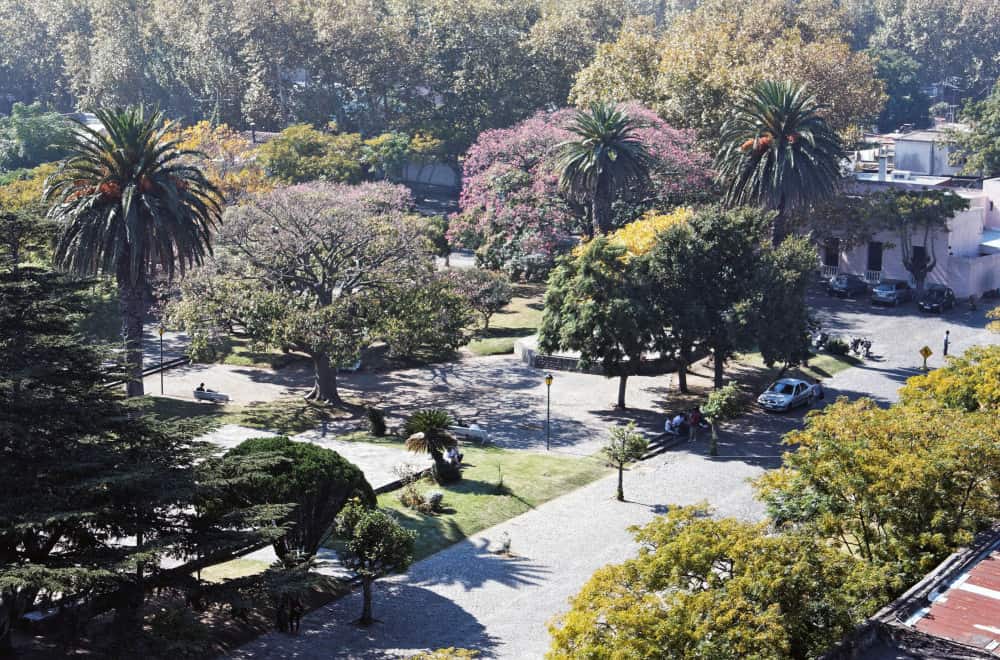
If you’re a history lover and have an eye for picturesque locations, Colonia will not disappoint you. Affordable and exuding a definite old-world charm, this city must be experienced, not just read about.
COVID-19 and Latin America
We are painfully aware of the effect of the COVID-19 pandemic, on not only our own countries but the entire world. We are presently taking the position that recovery will come and that in course, everything will return to some semblance of normal.
Most of Latin America has been hit particularly hard. We will update this article from time to time as we recover from this and the fallout becomes clearer.
What Went Wrong In Uruguay With Covid?
At first, Uruguay was the envy of the western world as it fared far better than most, much of which can be attributed to acting quickly, decisively, being well prepared, and a population that observed the rules put in place.
However, things fell apart rapidly in early 2021, partially because complacency set in after this early success. The summer holidays meant that people were more relaxed, restaurants and resorts were opened up, so naturally social distancing was not really maintained.
Once the second wave became established, shutdowns were not introduced quickly enough and their test and trace system was too slow to catch up. The fact that Uruguay is bordered by Brazil and Argentina, which are two of the hardest hit countries in the world, had a major impact, possibly the biggest.
A well established, funded and coordinated health care system had contributed to Uruguay’s early success. Compared to other countries in Latin America, The Uruguayan government spends almost double the percentage of their budget on healthcare, There are twice as many doctors per capita than in most of Latin America, and free healthcare is provided to the most vulnerable. This has helped in the latest recovery as their vaccine rollout is now one of the best in the region.
Final Words
Uruguay is a thriving nation, and despite a tumultuous political past, it now boasts of a stable governance system. The country has quality healthcare, is affordable, and, best of all, has high internet speeds!
Overall, if you’re looking to move into a Latin American country anytime soon, then Uruguay should certainly feature near the top of your choices. As an expat, there’s plenty to discover here.
So, why wait anymore? Get packin’!